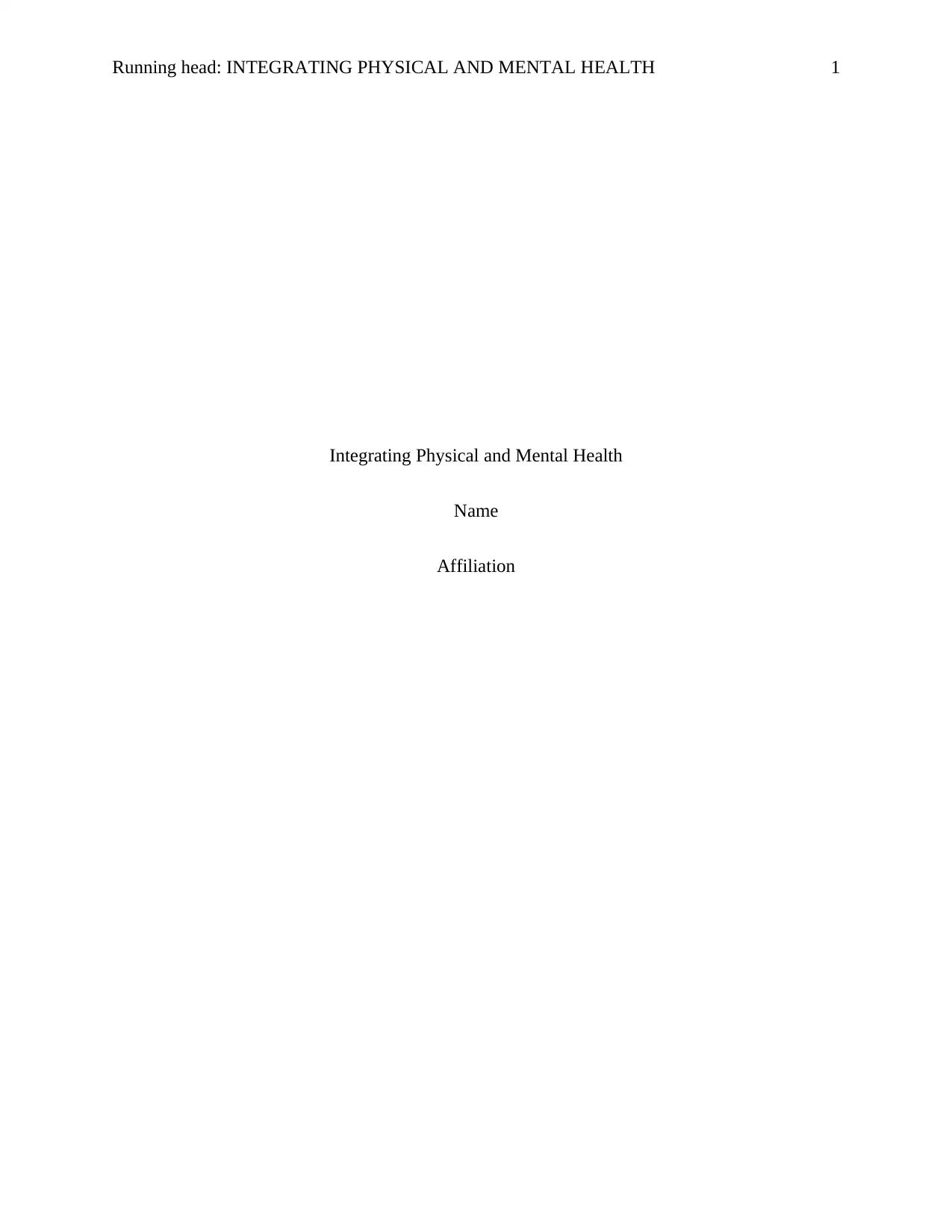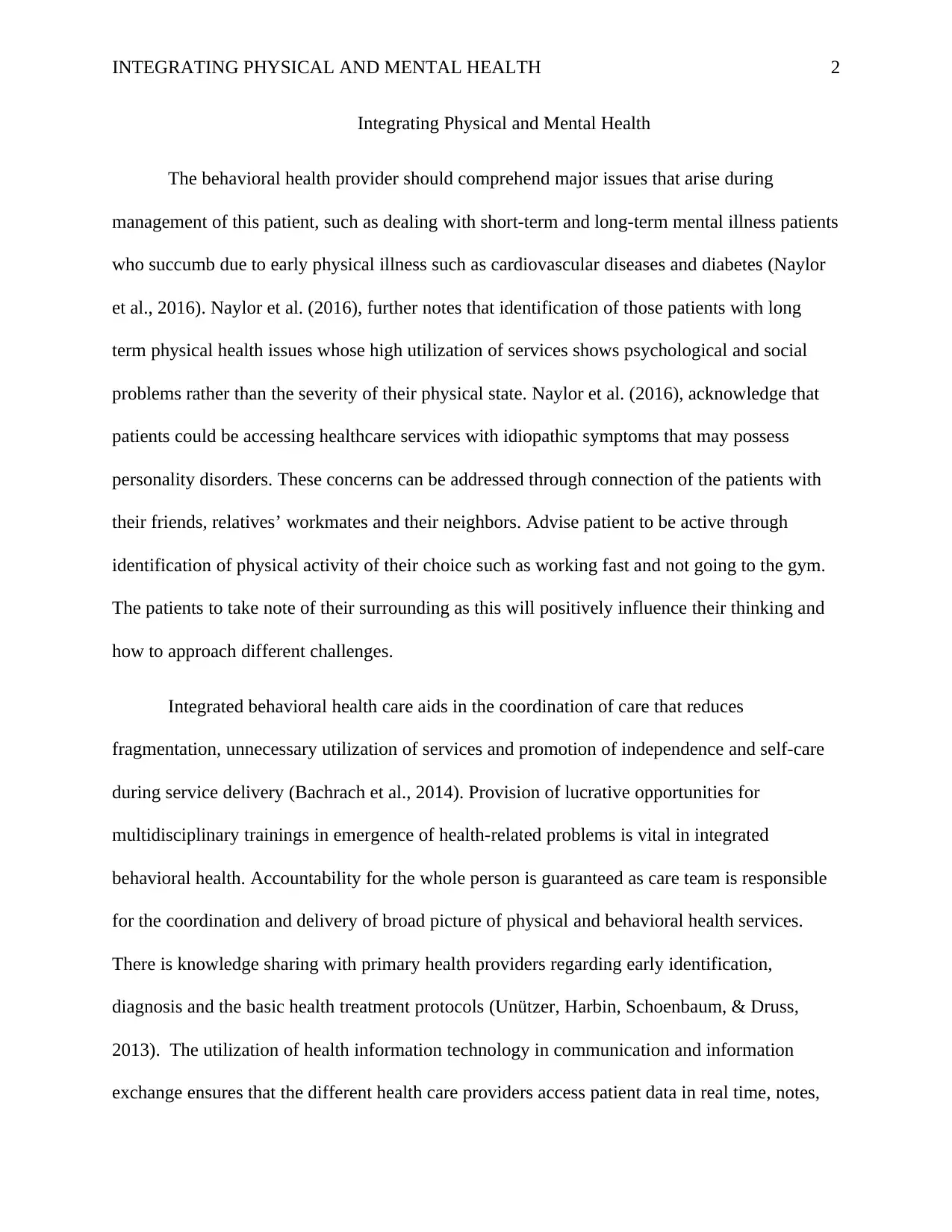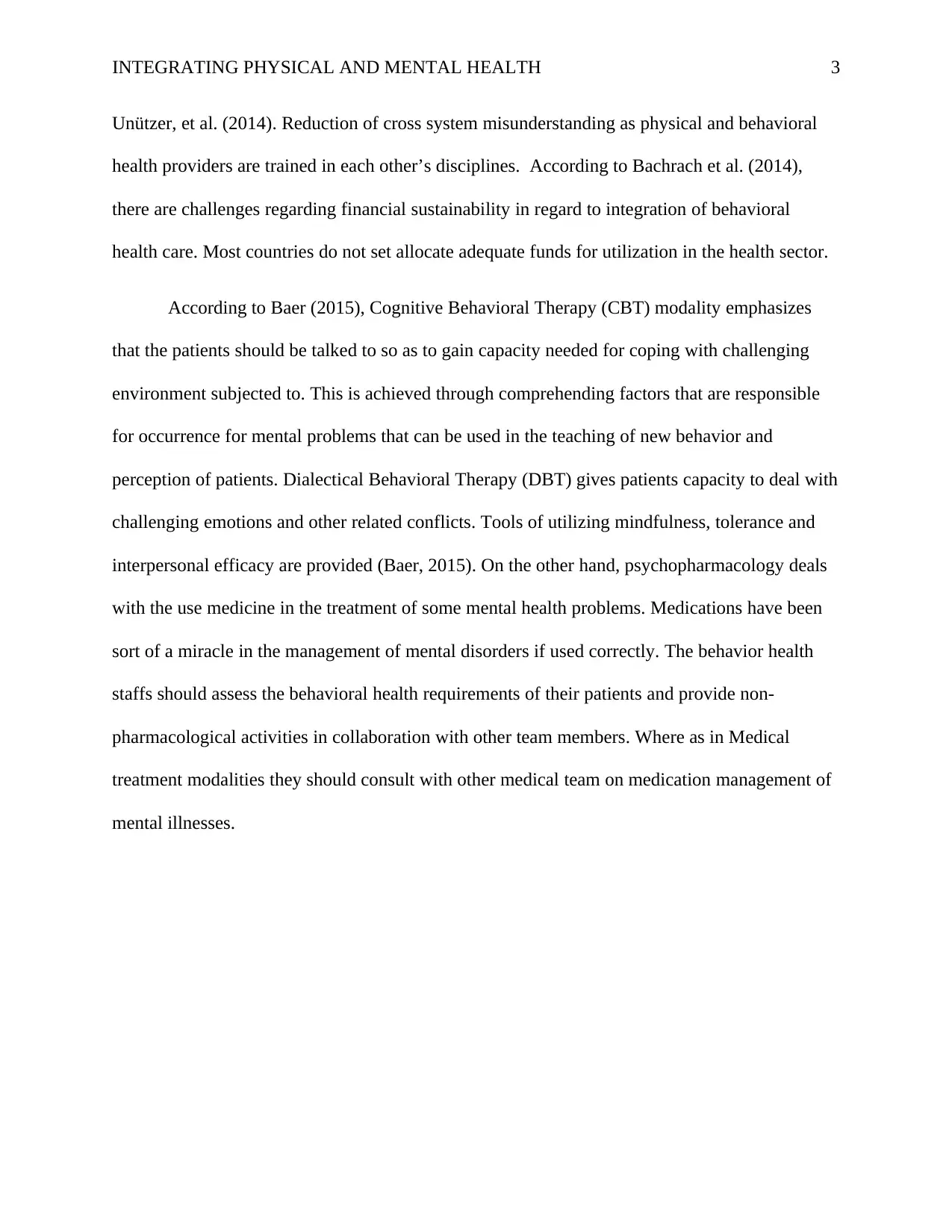Comprehensive Report: Integrating Physical and Mental Health Services
VerifiedAdded on 2023/06/10
|5
|778
|161
Report
AI Summary
This report addresses the integration of physical and mental health, focusing on the role of behavioral health providers. It explores the challenges and strategies for managing patients with co-occurring physical and mental health issues, such as those interested in weight management while struggling with depression. The report examines the goals and benefits of integrated behavioral health care, including coordinated care, reduced fragmentation, and improved patient outcomes. It contrasts treatment modalities in medical and mental health fields, detailing the roles of behavioral health providers in each discipline. The report discusses cognitive behavioral therapy (CBT), dialectical behavioral therapy (DBT), and psychopharmacology. The report also acknowledges the challenges related to financial sustainability and the importance of multidisciplinary training and knowledge sharing among healthcare providers. It emphasizes the use of health information technology for real-time data access and communication to reduce misunderstandings and improve patient care.
1 out of 5











![[object Object]](/_next/static/media/star-bottom.7253800d.svg)